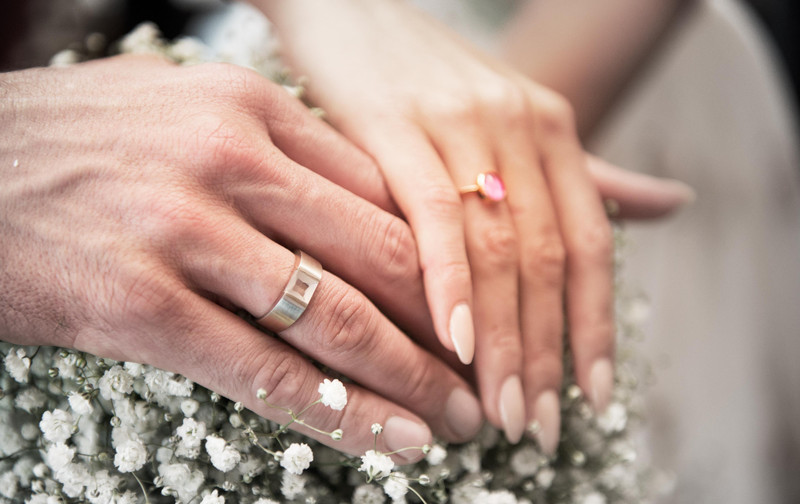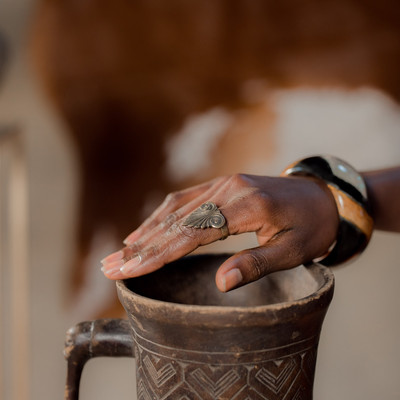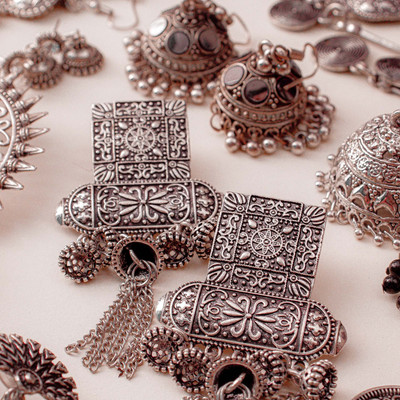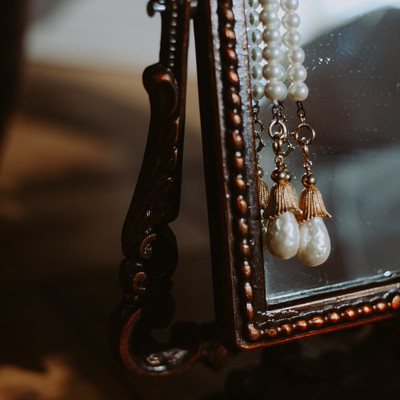From the Stone Age to modern times
The history of jewelry
A pearl necklace for the little black dress, hoop earrings for the summer dress, the wedding ring that serves as the seal of your love or the friendship bracelet that dangles not only on your own wrist, but also on that of your best friend – jewelry plays an important role in the lives of most people. It may signify connectedness and stand for either reserved elegance or ostentatious opulence and it may be inherited or given away and accompany the wearers through the ups and downs of their lives. For all those who opt for our unique Mevisto jewelry, there is yet another component of key relevance: Our unique pieces serve as reminiscences of dearly departed loved ones. After all: We use as little as 10 grams of hair or 50-100 grams of ashes to create a custom gemstone. Whether you commission a ring, pendant or a gemstone in its purest form, i.e. a cut stone - you will be able to carry your loved ones close to you at all times. But, where did our fondness for jewelry actually originate? And, since when have we adorned ourselves with all sorts of beautiful and precious things? In our attempt to shed light on the "The history of jewelry" we are presenting you with the most important milestones - from the Stone Age to the modern era.
The word "jewelry" and its origin
Let us first delve into etymology, i.e. the origin of the word. The word "jewelry" has the same origin as the term "jewels", which is rarely found in today's everyday language, but is used in upscale settings. The German word "Geschmeide", as a term for "precious jewelry", can in turn be traced back to the Middle High German "gesmîdec", which means "easy to work with", "malleable" or "pliant", as well as to the Old High German "smîda" for "metal". Both metal as the key material and the activity of designing and forging have thus been contained in this word for centuries. Aside from serving aesthetic functions, jewelry has always been linked to practical or social purposes. Jewelry is thus used to both adorn objects of utility and serve as everyday gems. Jewelry was also commonly used as a material emergency reserve and a means of payment. But, let us start at the beginning.
Stone Age: Of shells and animal teeth
We have always felt the need to decorate ourselves. Be it as a means to demonstrate wealth, a symbol of power or simply because we take pleasure in valuable things. When exactly people first used jewelry is a matter of historical controversy. However, recent studies suggest that people already adorned themselves with shells 100,000 years ago. Prior to that, they used body painting for decoration and as a way to indicate their social status. That is why only medicine men or chiefs wore jewelry in the beginning. In the Paleolithic period, people primarily produced chains with stones, snail shells, seashells, fish vertebrae, but also pearls or amber. In addition, as suggested by cave paintings, they adorned themselves with the teeth of defeated enemies or possessed belts made of animal teeth. Researchers were also able to establish that the people of this period already wore rings on ears and hands. In any case, jewelry proliferated independently in different parts of the world and said a lot about the respective wearer for a long time. Jewelry allowed religious, territorial or social groups to visually distinguish themselves from one other, allowing everyone to realize within a very short time with whom they were dealing. Jewelry thus served as a vehicle not only to underline one's own attractiveness but also to underpin one’s status within a community. People also resorted to talismans, for example, in a bid to boost fertility or their luck during hunting.
Antiquity: The first jewelry designers
Roughly 5000 years ago, the history of jewelry really picked up speed with the onset of jewelry production in the Bronze Age. Impressive testimonies of ancient goldsmith work were left behind - above all - by the Egyptians, but also by the Celts, Germans and Andean peoples. Gold was one of the most expensive and valuable, but also one of the most popular materials. Also increasingly coming into focus were bronze and silver. Especially the Egyptians managed for the first time to marry a particular sense of aesthetics with the ability to interlink individual components such gold and silver, but also precious stones. This resulted in delicate bracelets, magnificent amulets, clothing clasps and neck collars with ornaments and spirals as well as a great many pieces of high-value jewelry. However, jewelry was not only used as an ornament in ancient Egypt, but also as a burial item. This can be gathered, if nothing else, from the graves of pharaohs and their servants. The Celts, on the other hand, had a particular fondness for brooches, fibulae, belt buckles, necklaces, arm clasps, rings and - after the discovery of glass - also glass beads. A a similar kind of diversity can be found among the Germanic peoples. In particular, they are said to have had a predilection for colorful glass beads. The Vikings, however, often adorned themselves with a Thor’s hammer - probably the best-known motif of this Nordic people.
Middle Ages: Chivalrous restraint
Even in the Middle Ages, many people did not renounce certain accessories or treasures - even though the Early and High Middle Ages generally attached less importance to jewelry than other periods in history. Ladies in courtly circles or hailing from lower social classes therefore wore jewelry of rather simple workmanship, while Arabian and Byzantine influences were more likely to be found among the treasures owned by people who were more well-to-do. The aspect that gained particular importance during this time was the symbolism associated with jewelry. For example, brooches became a preferred engagement gift of the time. At the same time, jewelry became a popular bartering item that served as a substitute for money.
Baroque and Renaissance: Floral and lush
Floral patterns, magnificent designs and luxuriant arrangements - all this applies to the treasures of the Baroque era. Some have therefore even come to describe this period as wasteful when it comes to jewelry. In any case, starting with the Renaissance, jewelry staged a brilliant comeback in this era and became a work of art. No wonder given the period’s resurgence of antiquity and mythological topics. France often served as a model for magnificent jewelry creations under the rule of the Sun King. The diamond in particular became increasingly popular in courtly society - also thanks to new grinding techniques. But, silver also became ever more predominant next to gold.
Victorian age: Jewelry for all echelons of society
The history of jewelry in the Victorian era witnessed a striking turning point: Until that time, only well-off citizens were in a position to afford jewelry made of precious stones. Over time, however, new techniques for jewelry production led to the ability to produce gemstones synthetically. This also allowed a steadily increasing number of people from lower social classes to afford high-end jewelry, translating to a major boost to jewelry production overall. Especially gold continued to be in high demand, while mostly hair accessories in the form of tiaras and other accessories steadily gained in importance. However, while marked by many innovations, industrialization and progress, the Victorian age was also a conservative era that remained attached to many traditions. The electroplating process fell into this period as well. This innovation made it possible to plate silver. As a result: Even those for whom solid gold was out of reach financially were now able to complete their outfit with golden jewelry.

Modern times: A must-have for highlighting your personality
World wars and political movements, but also groundbreaking inventions and new artistic tendencies shaped the recent past. For many, jewelry increasingly grew into a must-have and a popular way to express their own individuality and underline their personality. In addition, many types of jewelry are still considered luxury items or regarded as an investment. In any case, the selection of jewelry available nowadays is more diverse than ever, offering the right product for every budget and every taste. Similarly, our Mevisto rubies and sapphires can be tailored to individual requirements thanks to a wide range of cuts and settings.




